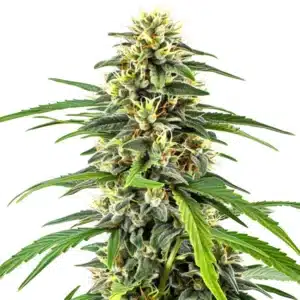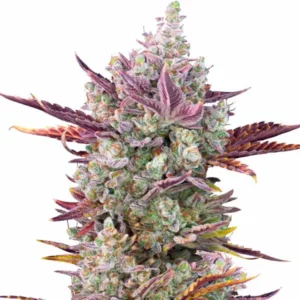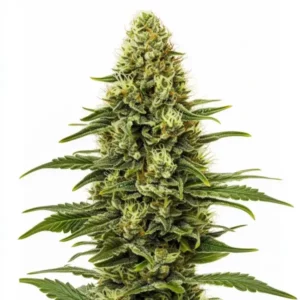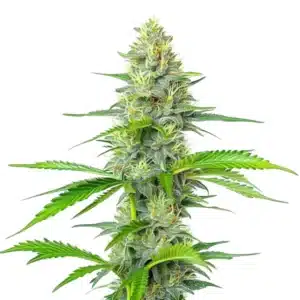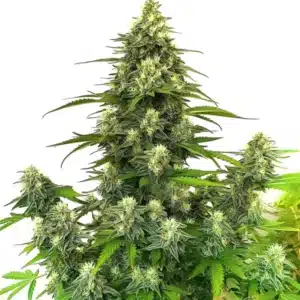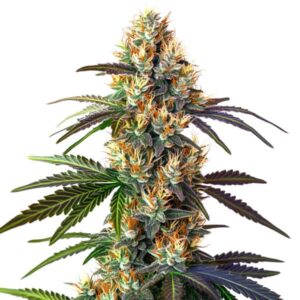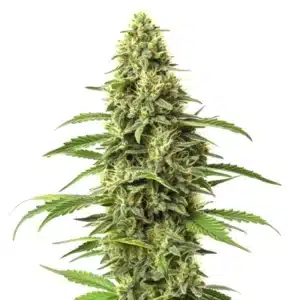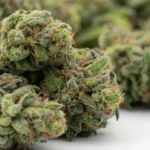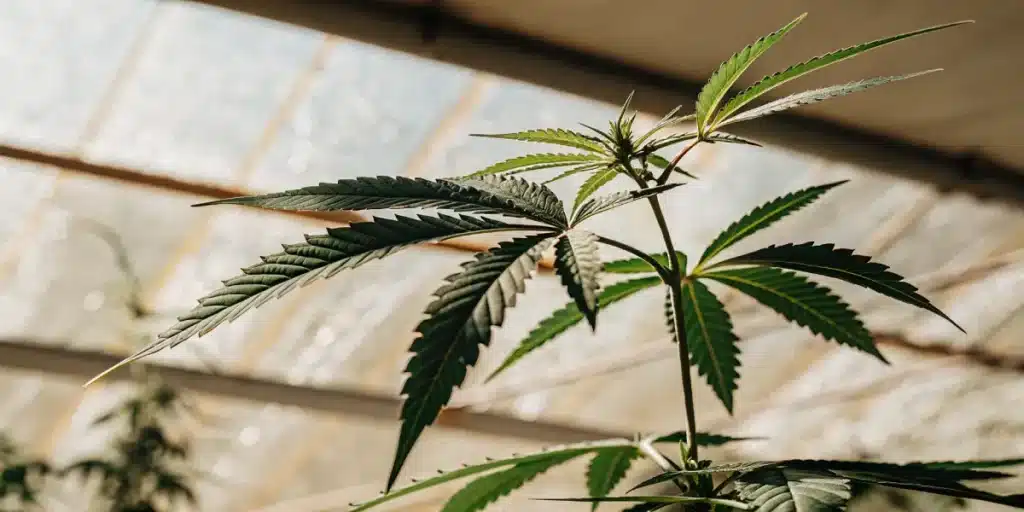
The Role of Stomata in Cannabis Plant Health
Stomata are tiny pores on the surface of cannabis leaves. These microscopic openings play a crucial part in maintaining the health of cannabis plants. Their main job is to control the exchange of gases, vital for photosynthesis and overall plant growth. The role of stomata in cannabis plant health is essential, as they regulate carbon dioxide intake, oxygen release, and water vapor loss, directly impacting yield and resilience.
Gas exchange occurs through stomata, allowing carbon dioxide in and oxygen out. This process is essential for photosynthesis, where plants convert light into energy. Without efficient stomatal function, cannabis plants would struggle to thrive and produce healthy yields.
Recommended Strains
Blue Dream
|
|
THC | 17% - 24% (Medium) |
|
|
Type | Feminized |
|
|
Yield | High |
|
|
Phenotype | 50% Indica / 50% Sativa |
Amnesia Haze
|
|
THC | 18% - 22% (Medium) |
|
|
Type | Feminized |
|
|
Yield | High |
|
|
Phenotype | 30% Indica / 70% Sativa |
Stomata also help regulate water loss through a process called transpiration. This regulation is crucial for maintaining plant hydration and overall health. For cannabis cultivators, knowing how stomata work can lead to healthier plants and better yields.
Stomata Function in Cannabis Growth
Stomata function in cannabis growth by facilitating the gas exchange needed for photosynthesis. They act as gateways for carbon dioxide to enter the plant, which is then used to create sugars and energy. The oxygen produced as a byproduct is released back into the atmosphere.
This process is vital for cannabis plants to grow and thrive. Without the proper function of stomata, plants cannot photosynthesize effectively. This can lead to stunted growth and poor health, ultimately affecting the plant’s yield and quality.
Knowing the role of stomata in cannabis plant health is crucial for optimizing growth conditions. By ensuring that stomata can function properly, growers can enhance the photosynthetic efficiency of their plants, leading to more robust growth. This involves not only monitoring environmental conditions but also selecting cannabis strains that are naturally suited to efficient stomatal function.
Besides to gas exchange, stomata also play a role in plant cooling and nutrient transport. These functions are interconnected, contributing to the overall vitality of the cannabis plant. By focusing on improving stomatal function, cultivators can improve the resilience of their plants to environmental stressors, ultimately leading to better plant health and increased yields.
- Stomata allow carbon dioxide intake, essential for photosynthesis.
- They release oxygen, a byproduct of photosynthesis, into the atmosphere.
- Proper stomata function ensures efficient energy production and plant growth.
Promos & Deals
Impact of Stomata on Cannabis Yield
The impact of stomata on cannabis yield is significant. Efficient stomatal function leads to better photosynthesis, resulting in healthier plants and higher yields. Conversely, poor stomatal regulation can lead to reduced growth and lower quality buds.
Growers can optimize stomatal function by maintaining proper humidity and temperature levels. This ensures that the stomata can open and close efficiently, allowing the plant to maximize its photosynthetic potential. Regular monitoring of environmental conditions helps in achieving this balance.
The role of stomata in cannabis plant health is critical when considering yield outcomes. By facilitating essential processes like gas exchange and transpiration, stomata directly impact the plant’s ability to produce energy and grow. Successful cultivation hinges on maximizing these processes through effective stomatal regulation.
Achieving optimal yields involves a keen knowing of how environmental factors influence stomatal behavior. By leveraging this knowledge, growers can create conditions that foster healthy stomatal function, ultimately translating to better plant performance and higher quality cannabis flowers. This knowledge empowers cultivators to make informed decisions regarding their growing practices.
- Optimal stomatal function enhances plant growth and yield.
- Environmental control is crucial for maintaining stomatal efficiency.
- Monitoring humidity and temperature improves overall plant health.

Stomatal Regulation in Cannabis Plants
Stomatal regulation in cannabis plants involves the opening and closing of stomata to control gas exchange and water loss. This process is influenced by environmental factors like light, humidity, and carbon dioxide levels. Knowing these factors can help growers optimize plant health.
High humidity can cause stomata to remain open, increasing water loss. Conversely, low humidity may cause stomata to close, restricting gas exchange. Balancing these conditions is key to maintaining healthy stomatal function and overall plant health.
Stomatal regulation in cannabis plants is a dynamic process that requires careful management. By adjusting environmental conditions such as light, carbon dioxide, and humidity, growers can influence stomatal behavior to favor optimal plant growth. This proactive approach ensures that the plant can efficiently manage its resources.
Additionally, knowing the cannabis stomata role in photosynthesis can provide valuable insights. By focusing on the factors that affect stomatal regulation, growers can ensure that their plants have the best possible conditions for energy production and growth. This knowledge is an essential component of successful cannabis cultivation.
- Stomatal regulation is influenced by environmental factors.
- Humidity levels directly impact stomatal behavior.
- Monitoring and adjusting environmental conditions is essential.
Cannabis Plant Stomata and Water Regulation
Cannabis plant stomata and water regulation are closely linked. Stomata control the amount of water vapor released from the plant, playing a significant role in its water management strategy. This regulation helps maintain plant hydration and supports nutrient uptake from the soil.
When stomata open, water vapor is released in a process called transpiration. This process cools the plant and facilitates nutrient transport. However, excessive water loss can lead to dehydration, so proper stomatal function is vital for maintaining the plant’s water balance.
The role of stomata in cannabis plant health extends to the management of water resources. By regulating water vapor release, stomata help prevent dehydration and ensure that the plant remains adequately hydrated. This balance is crucial for both plant vitality and the efficient uptake of nutrients.
Growers can support cannabis plant stomata and water regulation by monitoring soil moisture levels and ensuring that plants are neither overwatered nor underwatered. This involves selecting the right soil mix and employing watering practices that align with the specific needs of the cannabis strain being grown, ultimately supporting optimal stomatal function.
Cannabis Stomata Role in Photosynthesis
The cannabis stomata role in photosynthesis is indispensable. By allowing carbon dioxide into the plant, stomata enable the photosynthetic process to occur. This process is the foundation of plant energy production, supporting growth and development.
Photosynthesis converts light energy into chemical energy, which is stored as sugars. These sugars fuel plant growth and development, influencing the quality and quantity of the cannabis yield. Strains like Blue Dream from Blimburn Seeds are known for their robust photosynthetic capabilities, making them a popular choice among growers.
The role of stomata in cannabis plant health is crucial for photosynthesis, as these tiny structures facilitate the intake of carbon dioxide necessary for energy production. Without efficient stomatal function, the plant’s ability to harness light energy is compromised, affecting growth and yield potential.
By focusing on enhancing stomatal efficiency, growers can ensure that their plants have access to the carbon dioxide needed for robust photosynthesis. This involves not only maintaining optimal environmental conditions but also selecting cannabis strains known for their strong photosynthetic performance, thereby maximizing the plant’s growth potential.
- Stomata facilitate carbon dioxide intake for photosynthesis.
- Efficient photosynthesis supports plant growth and yield.
- Environmental control aids in maintaining healthy stomata.

FAQs
How do stomata affect cannabis yield?
Stomata affect cannabis yield by regulating gas exchange and water loss. Efficient stomatal function ensures that the plant can photosynthesize effectively, producing the energy needed for growth and development. This, in turn, leads to healthier plants and higher yields.
When stomata function poorly, the plant’s ability to photosynthesize is compromised, resulting in reduced growth and lower quality buds. By maintaining optimal environmental conditions, growers can enhance stomatal performance and improve their cannabis yield.
The impact of stomata on cannabis yield is evident in how they influence photosynthesis and water regulation. By ensuring that stomata are functioning optimally, growers can enhance the plant’s ability to produce energy and manage water resources effectively, leading to improved growth and higher yields.
Knowing the function of stomata in cannabis plant health is vital for maximizing yield potential. By focusing on stomatal efficiency, growers can create the ideal environment for their plants to thrive, ensuring robust growth and abundant harvests.
What environmental factors influence stomatal function?
Several environmental factors influence stomatal function, including light, humidity, and carbon dioxide levels. Light stimulates stomata to open, allowing gas exchange to occur. Humidity affects the plant’s water balance, influencing stomatal behavior.
High carbon dioxide levels can cause stomata to close, reducing gas exchange. Growers need to monitor these factors closely to ensure optimal stomatal function and overall plant health.
Stomatal regulation in cannabis plants is directly impacted by environmental conditions. By knowing how factors like light, humidity, and carbon dioxide levels affect stomatal behavior, growers can create an environment that promotes healthy stomatal function and supports plant vitality.
Monitoring these conditions allows growers to make timely adjustments, ensuring that the plant’s needs are met and that stomata can operate efficiently. This proactive approach is essential for maintaining the health and productivity of cannabis plants.
How can I improve stomatal regulation in my cannabis plants?
Improving stomatal regulation involves maintaining optimal environmental conditions. This includes controlling humidity and temperature levels to ensure that stomata can open and close efficiently. Regular monitoring with tools like hygrometers can help achieve this balance.
Choosing the right cannabis strain can also make a difference. Strains like Amnesia Haze from Blimburn Seeds are known for their adaptability and can thrive under various conditions, making stomatal regulation easier for growers.
Enhancing stomatal regulation in cannabis plants involves a combination of environmental management and strategic strain selection. By choosing strains that are known for their resilience and adaptability, growers can make it easier to maintain the conditions necessary for optimal stomatal function.
Tools like hygrometers and thermometers are invaluable for monitoring and adjusting environmental conditions to support healthy stomatal behavior. By taking a proactive approach, growers can ensure that their plants are well-equipped to handle various environmental challenges.
What is the relationship between stomata and water regulation?
The relationship between stomata and water regulation is centered around transpiration. Stomata release water vapor during transpiration, helping to cool the plant and facilitate nutrient transport. This process is crucial for maintaining plant hydration.
Excessive water loss, however, can lead to dehydration. Proper stomatal function is essential for balancing water regulation, ensuring the plant remains hydrated and healthy. Growers can manage this by controlling watering and drainage.
Cannabis plant stomata and water regulation are interconnected processes that significantly affect plant health. By managing transpiration through stomatal control, growers can ensure that plants remain hydrated without risking dehydration, which can impede growth and development.
For optimal water regulation, it’s important to consider both soil conditions and environmental factors. By creating a growing environment that supports effective stomatal function, growers can maintain the delicate balance necessary for healthy plant hydration and nutrient uptake.
Are there cannabis strains better suited for stomatal efficiency?
Yes, certain cannabis strains are better suited for stomatal efficiency due to their genetic traits. Strains like GG4, Blue Dream, and Amnesia Haze from Blimburn Seeds are known for their robust growth and adaptability, making them ideal for achieving optimal stomatal function.
These strains can handle various environmental conditions, ensuring that stomata can operate efficiently. Selecting such strains can lead to better plant health and higher yields, making them a popular choice among growers.
The function of stomata in cannabis plant health can be optimized by selecting strains that naturally exhibit efficient stomatal function. These strains are often more resilient to environmental fluctuations, allowing for better resource management and improved growth outcomes.
Growers seeking to maximize yield and quality can benefit from choosing strains with proven stomatal efficiency. By leveraging the genetic advantages of these strains, cultivators can create a more favorable growing environment that supports healthy plant development and abundant harvests.



